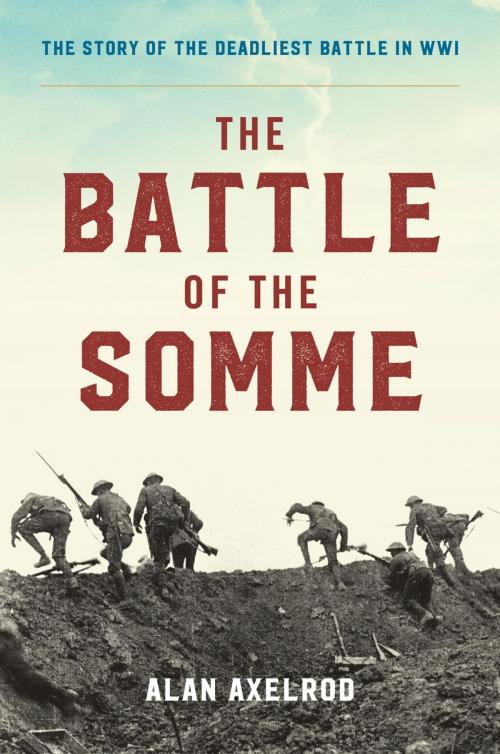| Author: | Alan Axelrod, author of "Generals South, Generals North" | ISBN: | 9781493022090 |
| Publisher: | Lyons Press | Publication: | October 3, 2016 |
| Imprint: | Lyons Press | Language: | English |
| Author: | Alan Axelrod, author of "Generals South, Generals North" |
| ISBN: | 9781493022090 |
| Publisher: | Lyons Press |
| Publication: | October 3, 2016 |
| Imprint: | Lyons Press |
| Language: | English |
offensive to be waged against Germany even as France poured incredible numbers of men into the slaughterhouse that was the desperate defense of Verdun.
élan vital” of the French people, a quality, he argued, that set the Gallic race apart from the rest of the world.
French losses were just under 200,000. The Germans lost at least 650,000. Just as the French refused to give up ground at Verdun, the Germans held on stubbornly at the Somme—so stubbornly that General Ludendorff actually complained that his men “fought too doggedly, clinging too resolutely to the mere holding of ground, with the result that the losses were heavy.”
The only thing “conclusive” about the Somme was the ineluctable fact of death. No battle ever fought in any conflict provided a stronger incentive for all sides to reach a negotiated peace—the “peace without victory” that Woodrow Wilson, still standing on the sidelines, urged the combatants to agree upon. Instead, the Kaiser, appalled both by Verdun and the Somme, relieved Falkenhayn and replaced him with Hindenburg and Ludendorff, who had achieved great success on the Eastern Front. The new commanders created two new defensive lines, both well behind the Somme front. On the one hand, it was a retreat. On the other, it was a commitment to draw the French and British farther east and invite them to sacrifice more of their soldiery. The modest advance the British made was but the prelude to additional slaughter.
offensive to be waged against Germany even as France poured incredible numbers of men into the slaughterhouse that was the desperate defense of Verdun.
élan vital” of the French people, a quality, he argued, that set the Gallic race apart from the rest of the world.
French losses were just under 200,000. The Germans lost at least 650,000. Just as the French refused to give up ground at Verdun, the Germans held on stubbornly at the Somme—so stubbornly that General Ludendorff actually complained that his men “fought too doggedly, clinging too resolutely to the mere holding of ground, with the result that the losses were heavy.”
The only thing “conclusive” about the Somme was the ineluctable fact of death. No battle ever fought in any conflict provided a stronger incentive for all sides to reach a negotiated peace—the “peace without victory” that Woodrow Wilson, still standing on the sidelines, urged the combatants to agree upon. Instead, the Kaiser, appalled both by Verdun and the Somme, relieved Falkenhayn and replaced him with Hindenburg and Ludendorff, who had achieved great success on the Eastern Front. The new commanders created two new defensive lines, both well behind the Somme front. On the one hand, it was a retreat. On the other, it was a commitment to draw the French and British farther east and invite them to sacrifice more of their soldiery. The modest advance the British made was but the prelude to additional slaughter.















